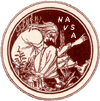 W. T. Stead: Centenary Conference of a Newspaper Revolutionary
W. T. Stead: Centenary Conference of a Newspaper RevolutionaryBritish Library, London, 16 & 17 April 2012
When William Stead died on the maiden voyage of the Titanic in April 1912, he was the most famous Englishman on board. He was one of the inventors of the modern tabloid. His advocacy of ‘government by journalism’ helped launch military campaigns. His exposé of child prostitution raised the age of consent to sixteen, yet his investigative journalism got him thrown in jail. A mass of contradictions and a crucial figure in the history of the British press, Stead was a towering presence in the cultural life of late Victorian and Edwardian society.
This conference marks the centenary of his death. We aim to recover Stead’s extraordinary influence on modern English culture and to mark a major moment in the history of journalism. In 2012 the British Library will open its state of the art newspaper reading rooms. In Stead’s spirit we will also investigate our own revolution in newspapers and print journalism in the age of digital news.
With Stead as a focal point, we will use aspects of his career to develop multiple avenues into the history of his time and ours. This is not a narrowly focused specialist conference, but one that aims to adopt wide cultural perspectives.
This is a call for expressions of interest. Please send proposals for papers (500 words) or any other suggestions for the conference to stead2010@googlemail.com by the end of July 2010. A full call for proposals will follow in 2011. Further details are here: https://sites.google.com/site/stead2012/
We welcome proposals on the following, in respect of Stead and/or related topics:
- Stead’s ‘New Journalism’. The Pall Mall Gazette, Review of Reviews and other journals were crucial in the emergence of the modern day broadsheet and tabloid press. Stead provides the opportunity to re-assess some of the key phases in the influence and structures of the press in modern Britain.
- Stead and technology. Stead was one of the best recorders of the second industrial revolution of the late Victorian period, when telegraphs, gramophones, microphones, telephones, Kodak cameras, wireless telegraphy, horseless carriages, typewriters and new printing technologies transformed everyday life.
- Stead and the New Imperialism. Stead’s support for English colonies was part of his advocacy for a white commonwealth that would be united through journalism and new communication technologies. We welcome papers on specific elements of Stead’s imperialism, from the support for General Gordon, his opposition to the South African War, to his friendship with Cecil Rhodes.
- Stead and the Titanic. Rumours about Stead’s manly self-sacrifice and Christian acceptance of death in the last hours of the boat were still being repeated as late as the film A Night to Remember (1958). How was Stead’s death reported? What was his cultural significance in 1912? We also particularly welcome papers on any aspect of the Titanic, especially on the role of newspapers in securing the mythic place the sinking has in our culture.
- Stead and the occult. Stead tended to report Spiritualism favourably, as part of the non-conformist world of religion. He became active in the movement in the 1880s and tried to foster support for the Society for Psychical Research. He ran the journal Borderland from 1893-7, which reported on ghosts, psychical experiments, hypnotic rapports, astral doubles and messages from the dead.
- Stead and religion. We aim to trace his early non-conformity, conversion to secular Evangelicism, and his advocacy of a National Church through investigative annuals, such as If Christ Came to Chicago. We also hope to examine his alliance to William Booth, founder of the Salvation Army, whom he helped compose In Darkest England and the Way Out in 1890.
- Stead and women’s rights. Stead employed women journalists and writers and championed their role in public life. Typically conflicted, this support derived in part from a Christian sense of women’s benign influence on public purity (so that he was disturbed by the overtly sexual New Woman literature of the 1890s). Stead is an exemplary figure to explore the anxieties and contradictions of the gender and sexual liberations of the late 19C.
- Stead’s ‘invention’ of the tabloid moral campaign. Through his famous campaigns (‘The Maiden Tribute of Modern Babylon’, the relief of General Gordon, British re-armament) Stead interceded into contemporary political and social debates and pioneered this major journalistic genre.
- Stead and politics. Stead’s political radicalism put him at the centre of events in the 1880s, including the ‘Bloody Sunday’ riots of 1887 and the Match Girl Strike in 1889. He was also a notable campaigner for world peace, speaking at international gatherings in the United States and Russia.
- Stead and the industry of print. As journalist, editor, publisher, proprietor, with a career that includes regional as well as metropolitan dailies, various monthly magazines, annuals, and a stream of serialised works in part issue, including his ‘Penny Poets’, Stead is a rich node for new research.
- Stead’s non-conformist, Northern origins. Stead’s career, which includes the editorship of the daily Northern Echo in Darlington for eight years in the 1870s offers an opportunity to investigate the provincial press in the late 19C and today.
- The continuing newspaper revolution. 2012 is the date when the British Library Newspaper Library moves from Colindale to new, state of the art reading rooms. What will the new digital archive mean for historical research? And what will be the future of print journalism?
Professor Laurel Brake (Birkbeck College)
Ed King (British Library): Head of Newspaper Collections.
Professor Roger Luckhurst (Birkbeck College)
Dr James Mussell (University of Birmingham)
For more information, contact Jim Mussell






